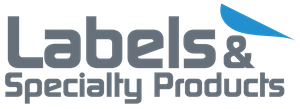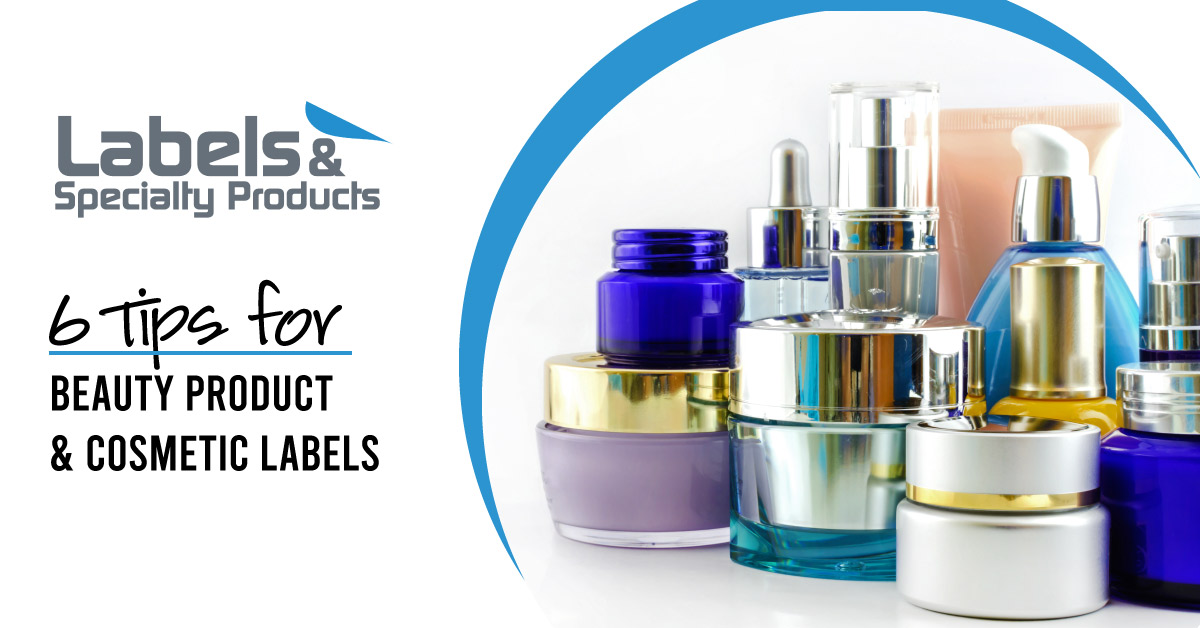6 Tips for Beauty Product and Cosmetic Labels
In the cosmetics industry, an unattractive label isn’t exactly a “good look.” Beauty products and cosmetic labels are expected to portray the look they create, even on small surfaces. But colors and copy aren’t your only consideration. Here are six tips to design your cosmetic product labels for compliance and performance.
Follow FDA Labeling Requirements for Cosmetic Labels
Cosmetic product labels that make false or misleading label statements (or those that lack the required information) may be considered misbranded. According to the FDA guidelines, a misbranded product may face regulatory action. You can review the full FDA cosmetic labeling guide here, but here’s a brief summary of the requirements you’ll have to follow:
The principal display panel needs to include the following:
- Product name, description, or illustration that conveys the use of the product
- Accurate net quantity of the contents in weight, measure, numerical count or a combination of weight or measure
An information panel must state the following:
- Address of the manufacturer, distributor or packer, including street, city, state, and zip code
- The phrase “Manufactured for . . .” or “Distributed by . . . “ if the distributor is not the manufacturer or packer
- Ingredients list in descending order of predominance, though active drug ingredients must be listed before cosmetic ingredients
- Label warnings, cautions and safe use directions for products which may be hazardous to consumers when misused
Include Truthful Certifications and Claims
The FDA’s cosmetic labeling guidelines aren’t the only information you’ll want to include on your product labels. On crowded shelves, unique (and true) claims can set you apart from competing brands. Common claims include:
- Organic (a regulated term here in the US that needs to meet USDA Certified Organic program requirements in order to receive the green and white logo)
- Vegan
- Plant-based
- Naturally derived
- Locally sourced
- Hypoallergenic
- Alcohol free
- Cruelty free
- “Free-from” statements (e.g. gluten free, sulfate free, paraben free)
These claims are almost all undefined by the FDA, including the term “organic” which the USDA regulates. That means that they’re often used liberally and in ways that mislead consumers. Your customers will benefit most from making only ethical, verifiable, and truthful claims.
Adapt to Different Label Shapes and Sizes
Most brands offer a variety of products, which means that containers (and labels) won’t be one-size-fits-all. It also means that your design, information layout, and branding may have to adapt to new shapes and less space. Common containers include:
- Tubes
- Rollers
- Jars
- Sprayers
- Airless bottles
- Compacts
- Droppers
Specialty label products are one way to ensure that you’ll have enough space to include both your design and legally-required information.
For example, piggyback labels are made of two layers, one which can be removed from the packaging and one which can’t. This gives you twice the space on your label for stating regulatory and promotional information.
Extended content labels (ECLs) are even roomier, allowing you to include six times the information on your label by folding out like a booklet from your container.
Choose Moisture and Squeeze-Resistant Materials
For cosmetic products used in or near a shower (i.e. perfume, lotion, shampoo, bath products), the high humidity can degrade the appearance of your label. Fortunately, there are adhesives and label materials to hold up in nearly any condition.
Adhesives
Humid environments require an adhesive with high solvent resistance, or the ability to remain sticky after contact with water or alcohol. Adhesives with high shear resistance are also less likely to tear or crack with stress and constant squeezing.
Label Materials
Film labels are one of the most common options for cosmetic labels, especially when moisture is present. Not only does film offer the “no-label” look, but its clear, permanent adhesive performs best in damp environments.
Customize Your Label with Embellishments
In a store where consumers judge your product by its cover, your label’s ability to stand out is vital to your sales. Here are some ways you can use special printing techniques to get noticed on the shelf:
Foil stamping
Custom labels with foil stamping use a shiny, metallic look to highlight your logo or a section of your design. Although gold and silver are the traditional colors, you have many other options that can change your product’s look.
Embossing
Labels aren’t just two dimensional. Label embossing adds the element of touch by raising patterns, text or images. It draws the customer’s eye (and hands) to a high-impact portion of your product label.
Laminates
A thin layer of film adheres to the surface of your label to add a high-gloss, satin or matte finish. They not only add custom shelf appeal, but they also protect from scratches, chemicals and moisture.
Partner with a Quality Printing Company
Attracting new customers with attractive product labels isn’t always easy. It’s best to invest in experienced designers and a printing company that can offer guidance.
At Labels & Specialty Products, our flexographic and digital printing technology gives us the ability to handle special printing techniques as well as any order size to save you money.
Ready to invest in custom cosmetic labels? Contact us today to learn more about how we can help you with your label printing project.

